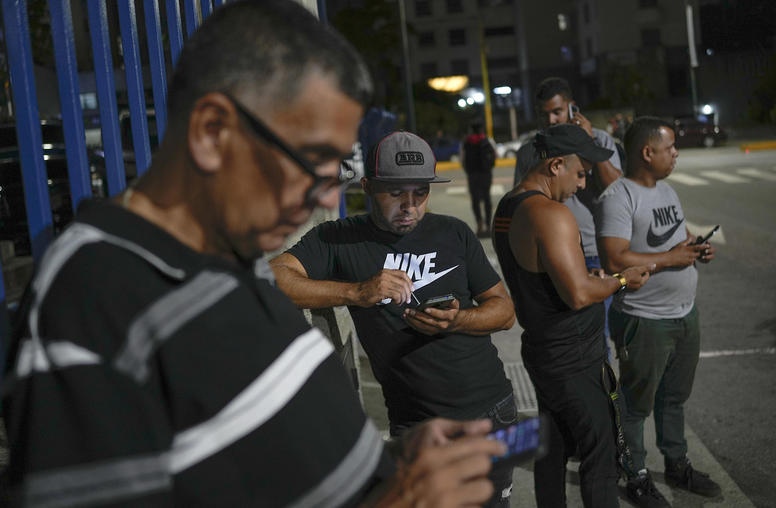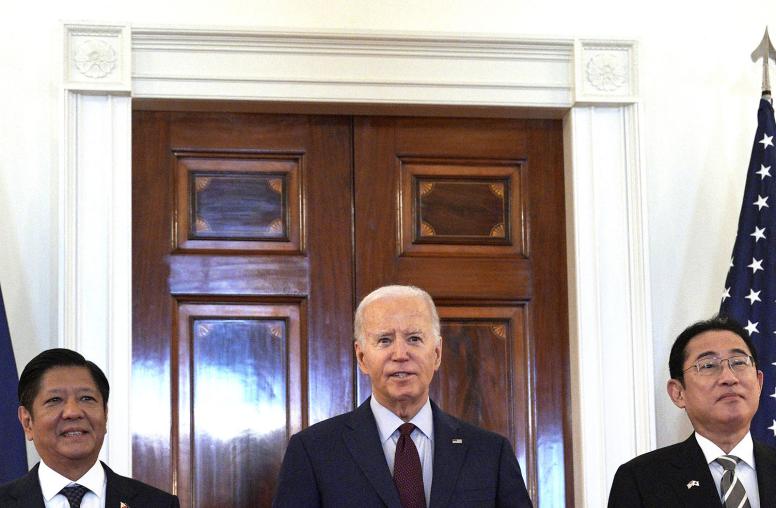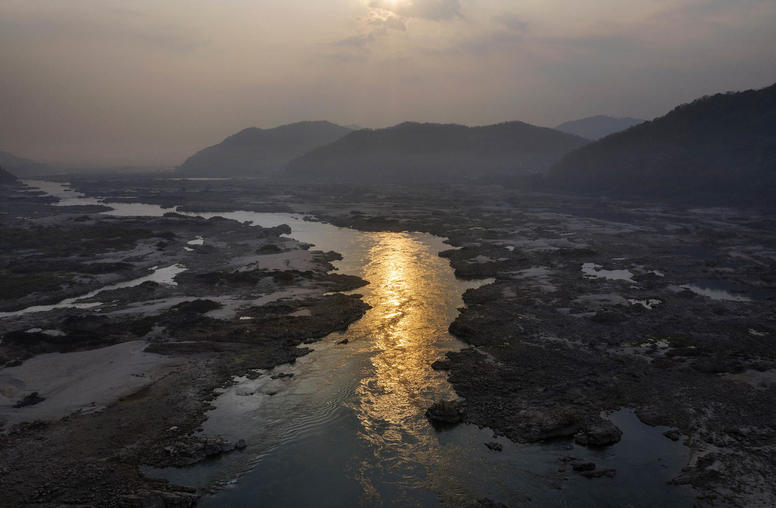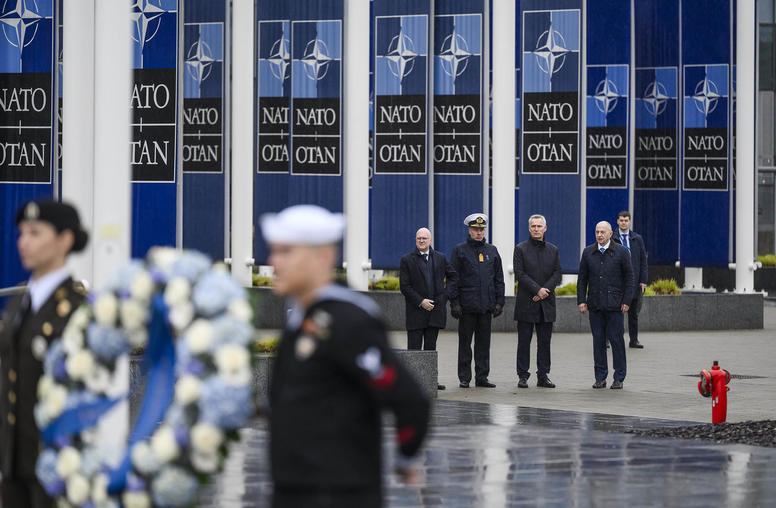China and the Responsibility to Protect: From Opposition to Advocacy
Initially opposed to the Responsibility to Protect (R2P), China has become a consistent advocate of the principle, endorsing its application in multiple countries while urging a constrained, multilateral approach to the use of force. This brief examines the trajectory and significance of China’s support for R2P. Given the country’s rising role in shaping the rules of global governance, continuing to gain its buy-in will be crucial in achieving the principle’s mandate.
Summary
- Despite its initial opposition to the Responsibility to Protect (R2P), China is now considered more than a cautious supporter.
- During the drafting of R2P, China—traditionally protective of sovereignty and reluctant to intervene1—dispatched harsh critiques of the new concept but gradually increased its engagement in the debate.
- Over time, its efforts were successful in reaffirming support for a state-centric system by narrowing the emerging principle.
- At the 2005 United Nations (UN) World Summit, China endorsed the final R2P document, which included new conditions for intervention (e.g., UN Security Council authorization and demonstration of the state’s failure to protect).
- China’s voting record for applying the principle demonstrates its commitment in practice, but mainly for pillars one and two.
- Regarding pillar three—permitting the use of force—China is reluctant to act unless (1) the principle is invoked strictly within the confines of the 2005 World Summit Outcome language, and (2) applying R2P does not lead to significant reforms of the target state’s political infrastructure.
- Given China’s rising role in shaping the rules of global governance, continuing to gain its buy-in will be crucial in further refining and effectively implementing R2P.
Introduction
The Responsibility to Protect principle reframes sovereignty as a responsibility, as opposed to a right, of states.2 This means that each state has a responsibility to protect its populations and prevent mass atrocities and abuse. If the state is incapable of doing so, then the international community has a responsibility to act. The principle reflects a broader trend of global governance, showing a gradual pushback on the boundaries of sovereignty in regards to human security, statebuilding activities, and coercive intervention.3
China has traditionally held a hard conception of sovereignty and shown a reluctance to further the liberal order.4 Yet its position on the Responsibility to Protect has continued to evolve. Despite China’s initial outright opposition to the principle, and predictions that it would at best adopt a cautious approach,5 China now firmly advocates building state capacities for the prevention of mass atrocities consistent with R2P pillars one and two. As a permanent member of the UN Security Council (UNSC), China has endorsed the principle’s application in multiple countries: Democratic Republic of the Congo and Burundi (2006); Darfur (2006); Libya, Côte d’Ivoire, South Sudan, and Yemen (2011); Mali (2012); Somalia (2013); and Syria (2014). However, it has also vetoed use of the principle, including in Myanmar, following its refusal of aid after Cyclone Nargis in 2007.
These cases illustrate that while China accepts the prudent use of R2P—even permitting the use of force—it does so under two conditions: (1) the principle is invoked strictly within the confines of the 2005 World Summit Outcome language, and (2) applying R2P does not result in significant reforms of the target state’s political infrastructure.
China’s Historical Trajectory with the Responsibility to Protect
2000–05: Opposition
During drafting of the R2P document, China took the “hardest line against intervention and in defense of sovereignty,”6 purporting that
- challenging sovereignty, unless for the benefits of self-defense, had no role in the UN Charter;
- the responsibility to protect would be abused by states operating in self-interest;
- the tensions between universal individual human rights versus rights of nations were yet to be reconciled; and
- these efforts would only introduce Western views and double standards in global politics.7
Thus, with serious concerns about the proposed principle, China joined the coterie of states seeking to constrain it. Their efforts succeeded in reaffirming support for a state-centric system by narrowing the emerging principle. At the 2005 UN World Summit, China acknowledged that “when a massive humanitarian crisis occurs, it is the legitimate concern of the international community to ease and defuse the crisis.” However, it also reiterated that “[e]ach state shoulders the primary responsibility to protect its own population…” and “[any] response to such a crisis should strictly conform to the UN Charter and the opinions of the country, and the regional organization concerned should be respected.”8
Reflecting this sentiment, the 2005 approved R2P language is markedly different from its original.9 The World Summit Outcome Document lifted the threshold on target states from being “unable and unwilling” to protect their citizens to having to show that these states are “manifestly failing” at protection. It also set the conditions that UNSC authorization be obtained prior to action and that the principle only be applied to confront genocide, war crimes, crimes against humanity, and ethnic cleansing. Finally, it stipulated that the international community act in a “timely and decisive manner,” within the bounds of the UN Charter and in concert with regional organizations on a case-by-case basis.
2005–08: Toleration
Although requiring some persuasion, China endorsed use of the principle in the Democratic Republic of the Congo and Burundi and Darfur, ultimately determining that the UNSC’s resolution language aligned with the World Summit Outcome Document wording.10 Also notable, China did not join other states when they began a rollback on the principle.11 Instead, it emphasized that any revisions to R2P would require endorsement from the UN General Assembly,12 pushing back against those that tried to “expand, willfully…interpret, or even abuse this concept.”13
2009–Present: Adaptation
A 2009 follow-up report on implementing the principle cast it as “an ally of sovereignty, not an adversary…the responsibility to protect seeks to strengthen sovereignty, not weaken it.”14 The report employed a strict interpretation of the 2005 World Summit Outcome Document but clarified the significance of the three-pillar strategy for advancing the mandated agenda:
- States bear primary protection responsibilities.
- The international community should assist states to meet their protection responsibilities.
- The international community should be prepared to use force via the UNSC, if peaceful means fail.
At this juncture, China began advocating the greater involvement of regional organizations, the use of state-level early warning systems, and a reframing of the international community’s “timely and decisive response.” In so doing, China emphasized state sovereignty as a means to achieve human protection.
China asserted that allowing regional organizations to have a greater say at the UNSC would help ensure that local understanding, regional sensitivities, and resource capacity are taken into account. Traditionally, regional organizations are wary about intervention, reinforcing China’s view that sovereignty is prime in international politics.15 In 2010, China initiated its first-ever thematic debate on how regional organizations could promote multilateralism and boost international security.16 The country continues to develop regional architectures, launching the Initiative on China-Africa Cooperative Partnership for Peace and Security in 2012.17
China also argued that the international community should support states and regions to acquire effective early warning systems.18 In this view, China recasts the meaning of a “timely and decisive response” by the international community. The country essentially supports a long-term proactive strategy for the lasting protection of vulnerable populations, rather than a short-term reactive response at the outbreak of conflict.
During this period, China invoked R2P pillar one in Côte d’Ivoire, Libya, Mali, Somalia, South Sudan, Syria, and Yemen.19 However, China abstained from voting on a no-fly zone for Libya, referring to pillar three language.20 The controversial compromise was viewed unfavorably both within and outside China; and many believe it drove China to veto multiple resolutions on the Syrian crisis.21 To address the harsh criticism of these vetoes, China tentatively floated a nascent, semi-official concept of Responsible Protection, which reframed the vetoes as fair and responsible. First published in March 2012 by a Chinese think tank official,22 the concept established six criteria for intervention that would restrict when nonconsensual measures could be used, emphasizing a means-end tradeoff (e.g., it is “absolutely forbidden to create greater humanitarian disasters because of protection”). However, Responsible Protection was short-lived and does not appear in Chinese discourse after 2012. Instead, China backs the revival of Brazil’s Responsibility While Protecting initiative and continues to focus on the first two pillars of R2P.23
Conclusion
China’s voting record on employing pillars one and two and continual engagement in shaping the R2P norm shows that it is more than a cautious supporter.24 However, it continues to signal its skepticism regarding pillar three. Like other emerging powers, China uses normative discourse to increase its international presence,25 and its moderate approach demonstrates a commitment to operating within the current rules-based system, while encouraging a constrained, multilateral R2P response. Given China’s position on the UNSC and rising role in shaping the rules of global governance—while not necessarily pushing for more governance—its continued engagement and buy-in will be crucial in further refining and effectively applying R2P.
Notes
- Allen Carlson, “More Than Just Saying No: China’s Evolving Approach to Sovereignty and Intervention” in New Directions in the Study of Chinese Foreign Policy, eds. Alastair Iain Johnston and Robert Ross (Stanford: Stanford University Press, 2006), 217–42; and Jonathan E. Davis, “From Ideology to Pragmatism: China’s Position on Humanitarian Intervention in the Post-Cold War Era,” Vanderbilt Journal of Transnational Law 44, no. 2 (2011): 217–83.
- International Commission on Intervention and State Sovereignty, The Responsibility to Protect: Report of the International Commission on Intervention and State Sovereignty (Ottawa: International Development Research Centre, 2011).
- Ramesh Thakur, The United Nations, Peace and Security: From Collective Security to the Responsibility to Protect (Cambridge: Cambridge University Press, 2006).
- Andrew Hurrell, On Global Order: Power, Values, and the Constitution of International Society (New York: Oxford University Press, 2007); and Gregory Chin and Ramesh Thakur, “Will China Change the Rules of Global Order?” The Washington Quarterly 33, no. 4 (2010): 119–38.
- Sarah Teitt, “Assessing Polemics, Principles and Practices: China and the Responsibility to Protect,” Global Responsibility to Protect 1, no. 2 (2009): 208–36.
- Thakur, The United Nations, Peace and Security, 268.
- International Commission on Intervention and State Sovereignty, The Responsibility to Protect: Research, Bibliography, Background (Ottawa: International Development Research Center), 391–94.
- Permanent Mission of the People’s Republic of China to the United Nations, “Position Paper of the People’s Republic of China on the United Nations Reforms,” June 7, 2005, www.china-un.org/eng/chinaandun/zzhgg/t199101.htm.
- United Nations General Assembly, “2005 World Summit Outcome,” A/RES/60/1, October 24, 2005.
- See United Nations Security Council (UNSC), “Resolution 1653,” S/RES/1653, January 27, 2006, and UNSC, “Resolution 1706,” S/RES/1706, August 31, 2006, respectively. See also UNSC, “Resolution 1674,” S/RES/1674, April 28, 2006, on the protection of civilians in armed conflict.
- “United Nations Human Resources Structures Must be Adopted to Meet Growing Demands of Peacekeeping, Other Field Operations, Budget Committee Told” [press release], GA/AB/3837, March 4, 2008; UNSC, “5319 Meeting,” S/PV.5319, December 9, 2005, and UNSC, “5319 Meeting,” S/PV.5319 (Resumption 1), December 9, 2005; UNSC, “5703rd Meeting,” S/PV.5703, June 22, 2007; and UNSC, “5781st Meeting,” S/PV.5781, November 20, 2007.
- For example, see UNSC, “5577th Meeting,” S/PV.5577, December 4, 2006; and UNSC, “5476th Meeting,” S/PV.5476, June 28, 2006.
- UNSC, “5577th Meeting.”
- United Nations General Assembly, “Implementing the Responsibility to Protect: Report of the Secretary-General,” A/63/677, January 12, 2009, 7.
- Alex J. Bellamy and Paul D. Williams, “The New Politics of Protection? Côte d’Ivoire, Libya and the Responsibility to Protect,” International Affairs 87, no. 4 (2011): 825–50.
- Lin Zhi, “Security Council to Open Thematic Debate on Cooperation between UN Regional Organizations,” Xinhua, January 6, 2010. Though this is not to say that regional organizations always hold sway in China’s decision making, see Courtney J. Fung, “Global South Solidarity?China, Regional Organisations and Intervention in the Libyan and Syrian Civil Wars,” Third World Quarterly 37, no.1 (2016): 33–50.
- Ren Qi, “At UN, China Backs Regional Peace Efforts,” China Daily, August 19, 2015.
- Sarah Teitt, “China and the Responsibility to Protect” (Brisbane: Asia-Pacific Centre for the Responsibility to Protect, 2008), 20.
- UNSC, “Resolution 1970,” S/RES/1970, February 26, 2011; UNSC, “Resolution 1975,” S/RES/1975, March 30, 2011; UNSC, “Resolution 1996,” S/RES/1996, July 8, 2011; UNSC, “Resolution 2014,” S/RES/2014, October 21, 2011; UNSC, “Resolution 2085,” S/RES/2085, December 19, 2012; UNSC, “Resolution 2093,” S/RES/2093, March 6, 2013, and UNSC, “Resolution 2165,” S/RES/2165, July 14, 2014.
- UNSC, “Resolution 1973,” S/RES/1973, March 17, 2011.
- Yun Sun, “Syria: What China Has Learned From its Libya Experience,” East-West Center Asia Pacific Bulletin no. 152 (2012), www.eastwestcenter.org/sites/default/files/private/apb152_1.pdf.
- Ruan Zongze, “Responsible Protection,” China Daily, March 15, 2012; Andrew Garwood-Gowers, “China’s ‘Responsible Protection’ Concept: Re-interpreting the Responsibility to Protect (R2P) and Military Intervention for Humanitarian Purposes,” Asian Journal of International Law 6, no. 1 (2016): 89–118.
- For example, see “Statement Delivered on Behalf of the Permanent Mission of the People’s Republic of China to the United Nations: General Assembly Informal, Interactive Dialogue on the ‘Responsibility to Protect: Timely and Decisive Response,’” September 5, 2012 (unofficial transcription), http://responsibilitytoprotect.org/China%20Statement%20_Transcribed_.pdf.
- Patrick Quinton-Brown, “Mapping Dissent: The Responsibility to Protect and Its State Critics,” Global Responsibility to Protect 5, no. 3 (2013): 260–82; see also Jonas Claes, “Protecting Civilians from Mass Atrocities: Meeting the Challenge of R2P Rejectionism,” Global Responsibility to Protect 4, no. 1 (2012): 67–97.
- Adriana Erthal Abdenur and Carlos Frederico Pereira da Silva Gama, “Triggering the Norms Cascade: Brazil’s Initiatives for Curbing Electronic Espionage,” Global Governance 21, no. 3 (2015): 455–74.
About this Brief
Courtney J. Fung is an assistant professor of International Relations in the Department of Politics and Public Administration at the University of Hong Kong. This brief examines China’s evolving position on the Responsibility to Protect and its role in shaping the principle’s mandate and application.



